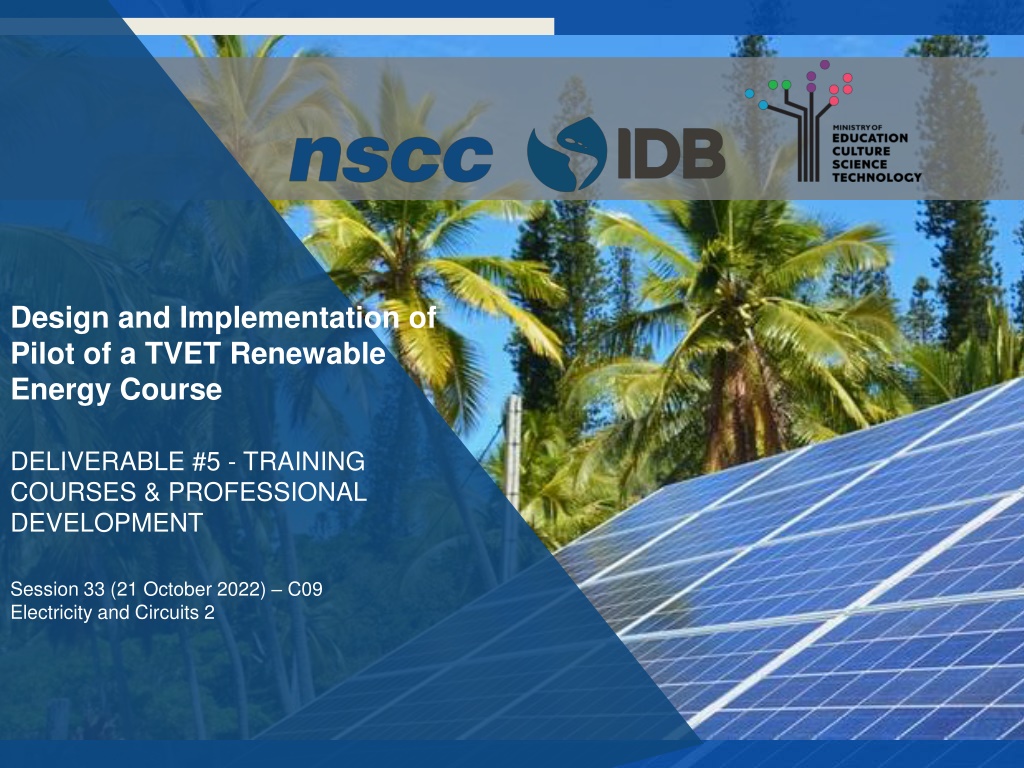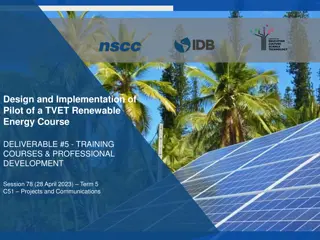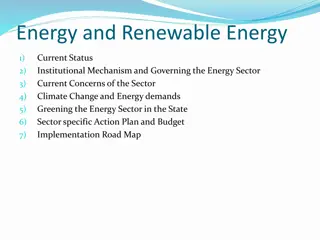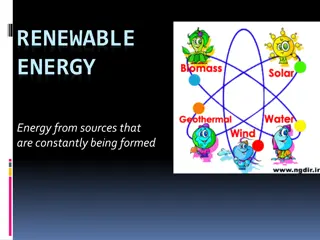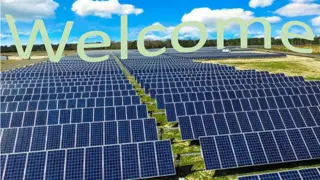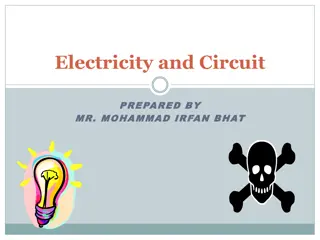TVET Renewable Energy Course: Session on Electricity and Circuits
Delve into the intricacies of electricity and circuits in the TVET renewable energy course. Explore topics such as transformers, grounding, battery usage, and grid operations. Gain insights into delta and wye connections, different types of systems, and the significance of batteries in renewable energy systems. Enhance your understanding of electrical concepts to foster an engineering mindset.
Download Presentation

Please find below an Image/Link to download the presentation.
The content on the website is provided AS IS for your information and personal use only. It may not be sold, licensed, or shared on other websites without obtaining consent from the author. Download presentation by click this link. If you encounter any issues during the download, it is possible that the publisher has removed the file from their server.
E N D
Presentation Transcript
Design and Implementation of Pilot of a TVET Renewable Energy Course DELIVERABLE #5 - TRAINING COURSES & PROFESSIONAL DEVELOPMENT Session 33 (21 October 2022) C09 Electricity and Circuits 2
Topics Review of last topics Understand wye connection transformers Understand delta connection transformers Understand grounding, bonding, and cables
Relevancy Understanding the impact of electrical To promote an engineering mindset
Review Understand the battery as a source of electricity. Understand series and parallel connections for batteries. Describe the different types of batteries used in RE systems. Understand magnetism, motors and generators. Understand how the electric grid operates related to small RE systems
Terminology Name some terms that would be found
Delta Connections Line 1 Line 2 Phase 3 Line 3 Delta-Connected Load Each load resistor will be connected to one of the phases. Delta-Connected Source The sum of the instantaneous phase voltages equals zero. For the delta-to-delta connection, Vline = Vphase = Vload. For the delta-to-delta connection, Iline = 1.732 Iphase = 1.732 Iload.
Wye Connections Line 1 Line 2 Line 3 Wye-Connected Source For the wye-to-wye connection with a balanced load: Wye-Connected Load Iline = Iphase = Iload. Vline = 1.732 Vphase = 1.732 Vload. There is no voltage between the source and load star-points.
Delta Systems 4 wire system Typically more reliable Requires more insulation More expensive Floating neutral Can t provide 120 volts High amperage
Delta System 5 wire system Moderate reliability Requires more insulation More expensive Prone to single phase shorts Requires more knowledge Difficult to balance load
Delta System Can deliver 120-V single- phase Can deliver 240-V single- phase Can deliver 240-V three- phase
Wye System 5 wire system Typically less reliable Requires less insulation Less expensive Can easily be adapted Can balance loads High voltage
Grounding OSHA (Occupational Safety Health Administration) NFPA (National Fire Protection Association) NFPA (National Fire Protection Association) ANSI/ISA (American National Standards Institute and Instrument Society of America) TIA (Telecommunications Industry Association) IEC (International Electrotechnical Commission) CENELEC (European Committee for Electrotechnical Standardization) IEEE (Institute of Electrical and Electronics IEEE (Institute of Electrical and Electronics Engineers) Engineers)
Grounding A conducting connection, whether intentional or accidental between an electrical circuit or equipment and the earth, or to some conducting body that serves in place of the earth.
Equipment Grounding May be called Earthing Connects non-current carrying part to earth Can have it not ungrounded Can connect neutral as grounding to frame Can connect ground wire to chassis
Earth Grounding Connects current carrying part to earth Typically neutral or ground wire
Impacts to Grounding Ground rod Ground clamp Soil conductivity Cable capacity
Question Where would you see the grounding for a PV array
Bonding The practice of connecting conductive objects to the grounding conductor Needed when conductive metal can become energized Needed for exposed metals to dissipate static electricity
